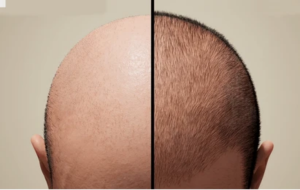Viral hepatitis, a silent killer, now claims as many lives as tuberculosis, with a global death toll of 1.3 million annually, solidifying its position as the second leading infectious cause of death worldwide. Alarmingly, these numbers continue to rise despite the disease being preventable, treatable, and often curable. This escalating crisis underscores a critical need for increased awareness, improved access to testing and treatment, and a concerted global effort to combat this often overlooked public health threat. The World Health Organization (WHO) has set an ambitious goal to eliminate viral hepatitis as a public health threat by 2030. This objective necessitates a multifaceted approach that addresses not only the medical aspects of the disease but also the social and economic barriers that hinder progress towards its eradication.
Hepatitis, characterized by liver inflammation, can be triggered by various factors, including alcohol abuse, certain medications, autoimmune diseases, and exposure to toxins. However, the most prevalent and dangerous forms are caused by viral infections, specifically hepatitis A, B, C, D, and E. Hepatitis A and E are typically transmitted through contaminated food or water, while hepatitis B, C, and D spread through blood and body fluids via unprotected sex, unsafe injections, shared needles, or from mother to child during birth. Hepatitis B and C pose the greatest threat, frequently progressing to chronic infections that can lead to life-threatening complications like cirrhosis, liver failure, and liver cancer if left untreated. The insidious nature of these infections lies in their asymptomatic progression, allowing the virus to silently inflict damage on the liver for years, even decades, before symptoms manifest.
The global burden of chronic hepatitis B and C is staggering, with 296 million and 58 million people infected, respectively. India bears a disproportionately high burden of these infections, yet awareness, screening, and treatment rates remain disappointingly low. This stark reality highlights the urgent need for targeted interventions to improve early detection and access to life-saving treatments. The theme for World Hepatitis Day 2024, “Break It Down,” encapsulates the essential steps required to combat this global health crisis. Breaking down the stigma, the silence, and the barriers to testing, treatment, and vaccination are crucial to achieving the WHO’s elimination goal.
Breaking the silence surrounding hepatitis is paramount. Unlike more openly discussed conditions like diabetes or heart disease, hepatitis remains a taboo subject, shrouded in secrecy and shame. This silence contributes to delayed diagnosis, often leading to irreversible liver damage. Open and honest conversations about liver health are essential. Individuals should be encouraged to discuss hepatitis testing with their doctors during routine check-ups. Community leaders, educators, and media platforms play a vital role in normalizing these discussions and fostering a climate of openness and understanding.
Combating the stigma associated with hepatitis is equally crucial. Misconceptions that link hepatitis exclusively to alcohol or drug use, or other perceived “reckless” behaviors perpetuate discrimination and prevent individuals from seeking testing or treatment. It is imperative to dispel these harmful stereotypes and emphasize that hepatitis can affect anyone, regardless of their background or lifestyle. Healthcare professionals, community organizations, and individuals alike must work together to create a supportive environment where people feel comfortable seeking help without fear of judgment.
Dispelling misinformation about hepatitis is another key element in the fight against this disease. Many people hold inaccurate beliefs about the rarity, incurability, or invariably fatal nature of hepatitis. Distrust in the highly effective and safe hepatitis B vaccine also poses a significant challenge. Public health campaigns must prioritize accurate information dissemination, emphasizing the availability of effective treatments for hepatitis B and the potential for a cure for hepatitis C. Promoting the safety and efficacy of the hepatitis B vaccine is crucial to increasing vaccination rates and protecting vulnerable populations.
Finally, addressing the barriers to access to testing, treatment, and vaccination is essential, particularly for those living in underserved communities. Cost, distance, and lack of information often prevent individuals from receiving the care they need. Governments, NGOs, and healthcare providers must collaborate to implement strategies that improve access, such as free screening camps, mobile health units, telemedicine services, and subsidized treatment programs. Individuals can also contribute by getting tested, encouraging others to seek testing, and supporting initiatives that promote awareness and access.
In conclusion, while viral hepatitis poses a significant global health threat, it is not insurmountable. Early diagnosis through a simple blood test, coupled with access to effective treatments and preventive vaccines, can dramatically alter the course of the disease. The key to success lies in breaking down the barriers of silence, stigma, and misinformation, and ensuring equitable access to testing, treatment, and prevention services. This World Hepatitis Day, let us not just acknowledge the problem, but actively participate in the movement to break the silence, break the stigma, break the misinformation, and ultimately, break hepatitis, one life at a time.














